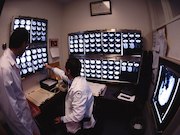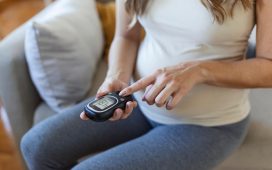Similar discriminatory accuracy for automated, clinical BI-RADS density measures for interval, screen CAs
MONDAY, April 30, 2018 (HealthDay News) — Automated and clinical Breast Imaging Reporting and Data System (BI-RADS) density measures similarly predict breast cancer risk, according to a study published online May 1 in the Annals of Internal Medicine.
Karla Kerlikowske, M.D., from the University of California in San Francisco, and colleagues conducted a case-control study involving 1,609 women with screen-detected cancer, 351 women with interval invasive cancer, and 4,409 matched control participants. The authors sought to examine whether breast cancer risk and detection are similar for automated and clinical BI-RADS density measures.
The researchers found that among women whose breast density was categorized by automated BI-RADS more than six months to five years before diagnosis, compared to those with scattered fibroglandular densities, women with extremely dense breasts had a 5.65-fold higher interval cancer risk and 1.43-fold higher screen-detected risk. The associations with clinical BI-RADS density were similar to those with automated BI-RADS density, irrespective of whether density was measured six months to less than two years or two to five years before diagnosis. Similar discriminatory accuracy was seen with automated and clinical BI-RADS density measures; accuracy was higher for interval versus screen-detected cancers. Automated and clinical BI-RADS categories had similar mammography sensitivity.
“Automated and clinical BI-RADS density similarly predict interval and screen-detected cancer risk, suggesting that either measure may be used to inform women of their breast density,” the authors write.
Editorial (subscription or payment may be required)
Copyright © 2018 HealthDay. All rights reserved.








